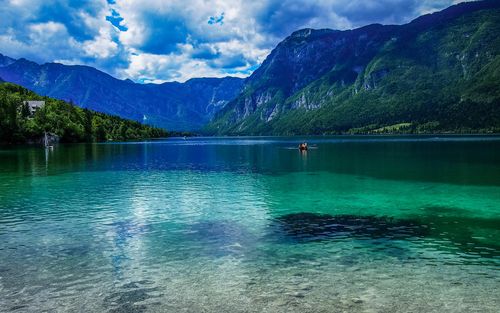Exploring the 6 Key Characteristics of Environmental Education: Making the World a Better Place
Environmental education is an interdisciplinary field that integrates science, mathematics, social studies, and technology with the purpose of promoting awareness, knowledge, skills, attitudes, and behaviors required for environmental protection and sustainability. In this article, we will explore the six key characteristics that make environmental education effective in making the world a better place.
Characteristics of Environmental Education
1. Holistic Approach
The first characteristic that makes environmental education effective is its holistic approach. Environmental education addresses the interrelatedness of all living and non-living things and how human actions impact the systems that support life. It recognizes that environmental problems cannot be solved in isolation and that solutions must be addressed through multiple lenses, including economic, social, and cultural.
2. Active Learning
Another key characteristic of environmental education is active learning. Students are not passive recipients of information but are active participants in their learning. Students engage in hands-on activities, fieldwork, and investigations that help them discover environmental issues and solutions for themselves. By actively participating in their education and taking ownership of their learning, students become empowered to create positive environmental change in their communities.
3. Systems Thinking
A third key characteristic of environmental education is systems thinking. Environmental education incorporates the concept of systems thinking, which involves understanding how multiple components of a system, like the environment, are interconnected and function together. Systems thinking emphasizes the importance of considering the long-term consequences of actions and recognizing that small changes can lead to big impacts.
4. Interdisciplinary Approach
Environmental education also has an interdisciplinary approach, which means that it incorporates knowledge from multiple subjects, including science, social studies, mathematics, and language arts. Through this approach, students gain a deeper understanding of how various disciplines contribute to environmental protection and sustainability.
5. Local Relevance
Environmental education also recognizes the importance of local relevance. When students learn about environmental issues and solutions that are tangible and relevant to their local communities, they become more engaged and motivated to take action. Students can see the impacts of their actions firsthand and become emotionally invested in creating positive change in their communities.
6. Solutions-Oriented
Finally, environmental education is solutions-oriented. It focuses on equipping students with the knowledge and skills required to address environmental challenges and create sustainable solutions. Students learn about best practices for resource conservation, waste minimization, and pollution prevention. They also learn how to collaborate with others to address environmental challenges and create positive change.
Conclusion
In conclusion, environmental education is a critical tool for creating a better world. It equips students with the knowledge, skills, attitudes, and behaviors needed to protect the environment and promote sustainability. It is characterized by its holistic approach, active learning, systems thinking, interdisciplinary approach, local relevance, and solutions-oriented focus. By integrating these characteristics into environmental education programs, we can empower students to become environmental stewards and create a more sustainable future for all.
(Note: Do you have knowledge or insights to share? Unlock new opportunities and expand your reach by joining our authors team. Click Registration to join us and share your expertise with our readers.)
